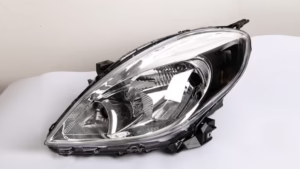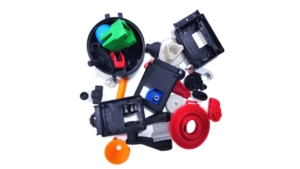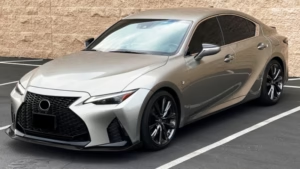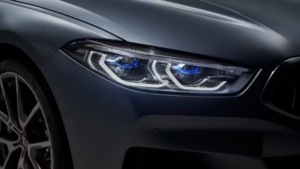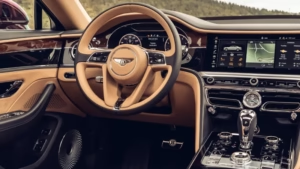Automotive headlights are essential components of a vehicle’s lighting system that provide illumination for safe driving, especially at night or in low visibility conditions. This article explores the basic information about car headlights.
What Are Automotive Headlights?
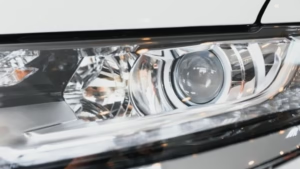
Automotive headlights, also known as car front lights, are vital lighting systems mounted on a vehicle’s front, typically consisting of a light source, reflector, and lens. These components work together to project light, ensuring safe navigation in low-visibility conditions.
The Role of Car Headlights
The primary functions of auto headlights can be summarized as follows:
- Illumination: Providing sufficient light for the driver to see the road clearly at night or in poor lighting conditions, which enhances safety.
- Signaling: Indicating the vehicle’s presence, direction changes (via turn signals), and braking to other road users.
- Vehicle Identification and Style: Headlights also contribute to the car’s aesthetic and help other drivers identify the car’s make or model, especially with distinct lighting designs.
How Automotive Headlights Work?
The working of headlights depends largely on the type of light source used. In traditional systems, such as halogen headlights, an electric current heats a tungsten filament inside the bulb, producing light. This light is then reflected by a parabolic reflector and focused through a lens to create a controlled beam pattern illuminating the road. More advanced light sources like LED and HID (High-Intensity Discharge) headlights operate differently: LEDs produce light through semiconductor chips via electroluminescence, while HID lights create light by igniting xenon gas with an electrical arc inside the bulb.
To prevent glare, modern car headlight systems use beam pattern controls such as shutters or shields to direct light precisely, ensuring optimal visibility for the driver and minimizing disturbance to other road users.
Types of Automotive Headlights
There are several widely used types of car front light systems, each with distinct characteristics:
Halogen Headlights
Halogen headlights are the most common type and use a tungsten filament enclosed in halogen gas. They offer a warm yellowish light, are cost-effective, and easy to replace. However, they generate more heat and have lower brightness compared to newer technologies.
HID (Xenon) Headlights
These headlights use an electrical arc between electrodes to ignite xenon gas, producing a bright, bluish-white light close to daylight. HID headlights offer greater brightness and energy efficiency than halogen lights but are more expensive, complex, and can cause glare if not properly adjusted.
LED Headlights
LED (Light Emitting Diode) headlights are highly energy-efficient, have longer lifespans, and emit bright, crisp light. Their compact size allows flexibility in headlight design, enabling sophisticated styling and performance enhancements.
Laser Headlights
The newest technology in automotive headlights, laser headlights use laser diodes to excite phosphorous materials, producing a highly focused, extremely bright beam that can illuminate over 500 meters ahead. Laser headlights are primarily used in high-end vehicles due to their advanced technology and high cost.
Common Customizable Components for Automotive Headlights and Their Typical Materials
At Zhongren, we specialize in automotive lighting components and custom plastic injection molding for automotive headlights, tailored to meet diverse performance requirements. Our main customizable parts include:
1. Lamp Housing and Brackets
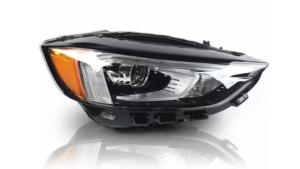
Custom plastic housings and mounting brackets are made from engineering plastics such as polycarbonate (PC), acrylonitrile butadiene styrene (ABS), PC/ABS blends, and polypropylene (PP). These materials offer excellent impact resistance, heat resistance, and dimensional stability.
2. Lens Seals and Gaskets
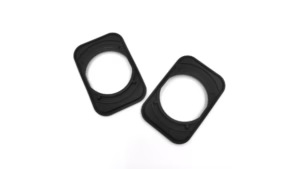
Precision-molded rubber seals and gaskets using ethylene propylene diene monomer (EPDM), silicone rubber (silicone), and nitrile butadiene rubber (NBR). These ensure water tightness, dust resistance, and vibration damping.
3. Lens Retainers and Clips
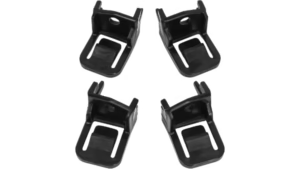
Durable plastic clips and retainers fabricated from nylon (PA), polybutylene terephthalate (PBT), or similar engineering plastics, providing secure lens fixation with flexibility.
4. Cable Grommets and Wire Protectors
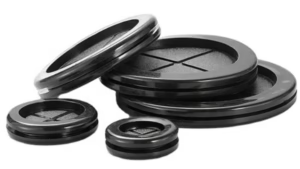
Custom rubber grommets and protective parts made from silicone or EPDM to safeguard electrical wiring against abrasion and environmental exposure.
5. Heat Shields and Insulation Components
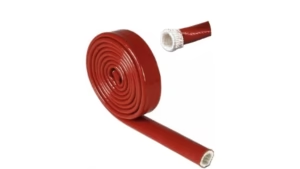
Specialty plastic or rubber parts designed for thermal insulation and heat management, typically using heat-resistant silicone or thermoplastic elastomers (TPE).
Zhongren Custom Headlight Housing
With advanced manufacturing capabilities, Zhongren can tailor headlight housings to meet the unique requirements of various automotive designs, ensuring high-quality, durable, and perfectly fitting components. Welcome to contact Zhongren and get precision-engineered solutions that blend performance and personality.
FAQ
How does injection molding affect making car headlights?
Injection molding shapes plastic parts like housings quickly and accurately. It helps make strong, detailed, and consistent headlight parts in large numbers.
What materials are used for car headlight housings?
We mainly use strong plastics like polycarbonate (PC), polypropylene (PP), ABS, and their blends.
Do you offer custom headlight housing manufacturing?
Can you supply complete headlight assemblies or just plastic housings?
We focus on custom car headlight plastic housings but can supply assembly services if you have other headlight compontes.
